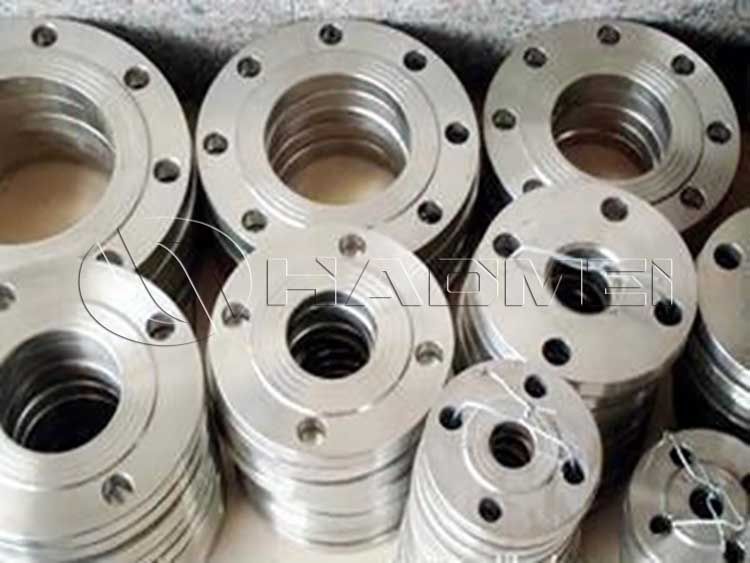Aluminium Flange and T Shaped Aluminum
In shipbuilding, the selection of every structural element directly impacts a vessel's safety, stability, and operational efficiency. T-sections and aluminum flanges, as two core components, play an irreplaceable role in key areas of a ship's hull structure and piping systems, thanks to their unique structural advantages and performance characteristics.

Aluminum T-sections
Named for their "T"-shaped cross-section, T shaped aluminum consists of a web and flanges. This structural design combines high strength with lightweight, making them an ideal choice for load-bearing areas such as hull structures and deck frames. In shipbuilding, T-sections are primarily used in the following key scenarios:
From a structural perspective, T-sections play a key role in longitudinally reinforcing the hull. During navigation, ships are subjected to constant impact from waves and currents, subjecting the hull to significant longitudinal bending stresses. T-sections installed within the hull effectively transfer vertical loads through the web, while the flanges distribute horizontal pressure, effectively enhancing the hull's bending resistance and preventing structural deformation caused by long-term stress. For example, in the cargo holds of large cargo ships, T-shaped reinforcement ribs are placed at regular intervals and welded to the hull steel plate to form a single frame, ensuring that the holds do not suffer structural damage when loaded with heavy cargo.
T-shaped reinforcements also offer significant advantages in supporting decks and superstructures. As the ship's "load-bearing platform," the deck must withstand the weight of equipment, personnel movements, and cargo stacking. The weight of the superstructure (such as the wheelhouse and crew quarters) further increases the load on the deck.
Combined with the deck steel plate, the T-shaped reinforcement creates a stable support system: the web runs perpendicular to the deck, providing vertical support for the superstructure; the flanges conform to the deck surface, expanding the load-bearing area and reducing localized pressure. This design not only reduces the required deck thickness (saving 20%-30% of material compared to traditional flat-plate structures), but also effectively distributes the load, preventing cracks in the deck caused by excessive localized stress.
T-shaped reinforcements are also widely used in ship bulkhead structures. As a key component dividing a ship's interior, bulkheads require a certain level of impact resistance and sealing. Using T-shaped profiles as bulkhead reinforcements can enhance their structural strength without increasing their thickness. Furthermore, the "grid structure" formed by the web of the T-shaped profile and the bulkhead steel plate effectively disperses collision forces, reducing the risk of bulkhead damage in the event of an accidental collision.
Aluminum Flanges
As connecting components in piping systems, the performance of flange aluminium directly impacts the sealing, pressure resistance, and service life of the pipelines. In the marine industry, aluminum flanges, due to their lightweight, corrosion-resistant, and easy-to-process advantages, are gradually replacing traditional cast iron and steel flanges and becoming the mainstream choice for ship piping systems (particularly fresh water, fuel, and cooling systems).
From a material perspective, the corrosion resistance of aluminum flanges is key to their widespread use in ships. Ships spend a long time in the marine environment, where salt in the air and seawater splash can cause severe corrosion to metal components. Aluminum flanges, through anodizing or spraying with an anti-corrosion coating, form a dense oxide film on their surface, effectively blocking contact between seawater and salt and the aluminum substrate.
Their corrosion resistance can be up to 3-5 times that of traditional steel flanges. The corrosion resistance of aluminum flanges is particularly crucial in a ship's freshwater system, which directly supplies water for crew members' daily needs and equipment cooling. Leakage due to corrosion in the flanges not only impacts the crew's daily lives but can also cause equipment failure due to a lack of cooling water.
Aluminum flanges offer a significant advantage in terms of lightweighting. Compared to steel flanges, aluminum has a density only about one-third that of steel, allowing aluminum flanges of the same specifications to weigh over 60% less. For ships, lightweighting translates to lower fuel consumption, higher speeds, and greater cargo capacity.
For example, a medium-sized container ship uses thousands of flanges in its piping system. Using all aluminum flanges could reduce the ship's total weight by approximately 5-8 tons, saving approximately 100-200 tons of fuel annually and significantly reducing operating costs. In specific applications, aluminum flanges perform particularly well in ship fuel systems. As the ship's "power source," fuel systems must withstand high pressures (typically 0.5-2.0 MPa) and temperatures (up to 80-120°C).
Furthermore, sulfides in the fuel can corrode flanges. Aluminum flanges, through appropriate alloy composition design (such as the addition of elements like magnesium and manganese), can enhance their pressure and temperature resistance. Their corrosion resistance effectively resists the attack of sulfides in the fuel, ensuring the sealing and safety of the fuel system. Furthermore, the ease of machining aluminum flanges facilitates the installation and maintenance of ship pipelines.
Aluminum flanges are easy to cut and can be quickly manufactured to various specifications based on the specific requirements of the pipeline. During installation, their low elastic modulus allows them to better adapt to the thermal expansion and contraction of the pipeline, reducing the risk of flange leakage caused by temperature fluctuations.









